How Do I Fix 'This PC Can't Run Windows 11' Error? Your Complete Guide Is Here
Windows 11 was officially announced on June 24th, and Microsoft provides a PC Health Check for Windows 10 users to see if their computer is compatible with the new operating system, which will show one of two possible results.
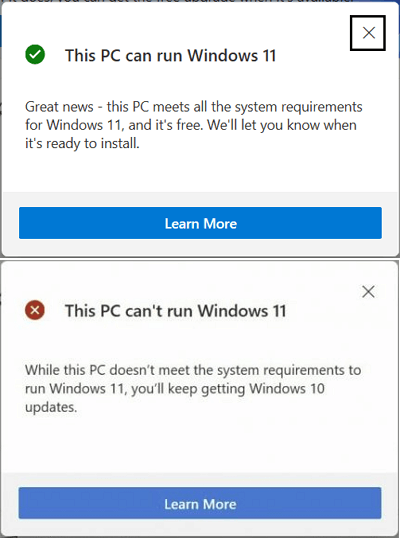
1. This PC meets all the system requirements for Windows 11, making it capable of running the operating system.
2. The PC is unable to run Windows 11 because it does not meet the system requirements for the operating system.
If you received the first message, congratulations, you can directly update to Windows 11 and it will run smoothly without any issues on your computer. However, if you got the second error message, it means your current computer is not compatible with Windows 11 and you can't directly install it on your computer. To fix this, we'll show you how to make your PC compatible with Windows 11.
- How to Fix "This PC can't run Windows 11. The PC must support Secure Boot" Error
- How to Fix "This PC can't run Windows 11. The system disk needs to be 64GB or larger." Error
- How to Fix "This PC can't run Windows 11. The processor isn't supported for Windows 11." Error
- How to Fix "This PC can't run Windows 11. TPM 2.0 is a requirement for running Windows 11." Error
Error: This PC can't run Windows 11
The "This PC can't run Windows 11" error is a message from the PC Health Check application, indicating that your computer doesn't meet the minimum system requirements for Windows 11, which are: a 64-bit processor, 4GB of RAM, a 64GB hard drive, and a UEFI firmware. If your PC doesn't meet these requirements, the error message will appear, preventing you from upgrading to Windows 11.
| Processor: 1 gigahertz (GHz) or faster with 2 or more cores on a compatible 64-bit processor or System on a Chip (SoC) is the system requirement. | Internet connection: To set up Windows 11 Home, a Microsoft account and internet connectivity are required. This is necessary for the initial setup process, which includes activating the operating system, downloading and installing necessary updates, and configuring the device's security and privacy settings. |
| TPM: Trusted Platform Module (TPM) version 2.0 | Graphics card: DirectX 12 compatible graphics / WDDM 2.x |
| Storage: 64 GB or larger storage device | Display: >9" with HD Resolution (720p)p) |
| System firmware: UEFI, Secure Boot capable | Memory: 4 GB RAM |
The "This PC can't run Windows 11" error may have different descriptions depending on your computer hardware. PC Health Check may display various error messages, such as [list of error messages]. If you encounter any of these errors, follow the respective solution to fix it on your computer.
- You can't run Windows 11 on this PC because it doesn't support Secure Boot.
- To run Windows 11, your PC's system disk needs to have a minimum size of 64GB.
- The PC you are trying to upgrade to Windows 11 does not meet the minimum system requirements, specifically the processor is not compatible with the operating system.
- This PC can't run Windows 11. The Trusted Platform Module (TPM) 2.0 is a requirement for running Windows 11.
- Other more...
To fix issues and allow Windows 11 update, follow the respective fixes for each problem, making it possible to update or install Windows 11 on your computer.
Guide 1: How to Fix "This PC can't run Windows 11. The PC must support Secure Boot" Error
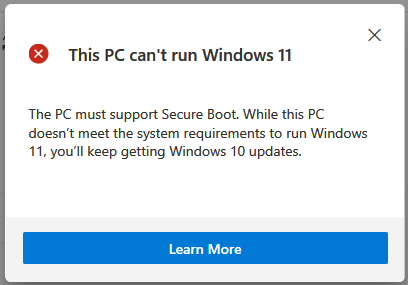
Detailed Error Message: ""This PC can't run Windows 11, but you'll still get Windows 10 updates."
Modern PCs with Windows 10/8 have Secure Boot enabled, which helps keep the computer safe. To install or update to Windows 11, the Secure Boot mode must also be enabled.
How to Fix Guide:
1. Check if your system supports Secure Boot
Step 1. Press Windows + R keys, type msinfo32.exe, and hit Enter.
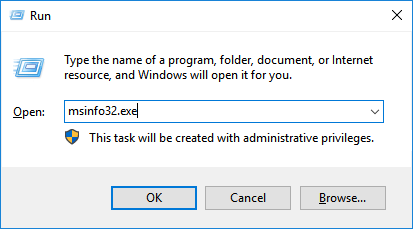
Step 2. On the System Information window, select System Summary.
Step 3. Scroll down to see if you find a section named Secure Boot State in the BIOS or UEFI settings.
If the Secure Boot State shows as "Off", it means your computer supports Secure Boot and you can proceed with enabling it.
If the Secure Boot State shows as "Unsupported", it means that your computer hardware doesn't support secure boot. To resolve this, proceed to the next step to verify if your computer supports UEFI mode.
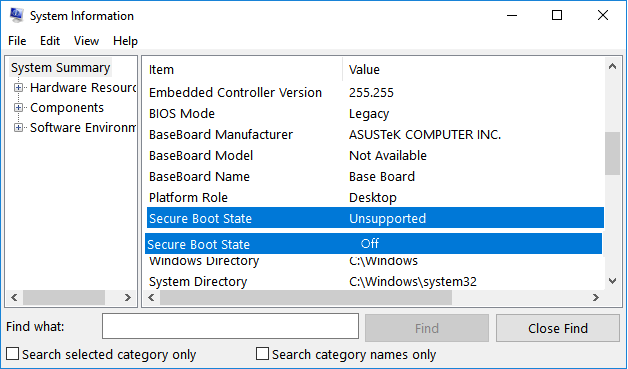
2. Check if your computer supports UEFI mode
Step 1. Restart PC and press F2/F10/Del to enter BIOS.
Step 2. To check if your computer supports UEFI mode, go to the Boot Menu, navigate to the boot mode section, and click on it to see if your computer has the capability to boot in UEFI mode.
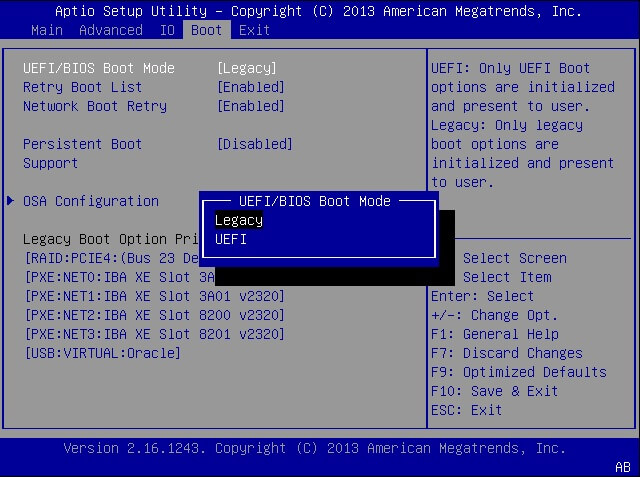
If you see a UEFI mode, it means your computer supports this boot mode. However, if it's currently disabled, you should move on to the next guide to enable UEFI and Secure Mode.
If your computer doesn't support UEFI mode, you won't be able to enable Secure Boot and upgrade to Windows 11.
3. Enable UEFI Mode and Secure Boot
Enable UEFI Mode:
Step 1. To check if the system disk is with GPT type, you can open Disk Management, select the system disk, and check its partition style. If it's listed as GPT, then it's a GPT disk.
If not, convert the OS disk to GPT disk first as UEFI and Secure Boot requires GPT disk type.
Here, we recommend using Qiling Partition Master to convert the disk to MBR or GPT without deleting any data or partitions.
Step 2. After converting the disk, restart your PC and enter the BIOS settings. In the Boot Menu, select the "UEFI" option.
Step 3. Save the changes and restart the PC.
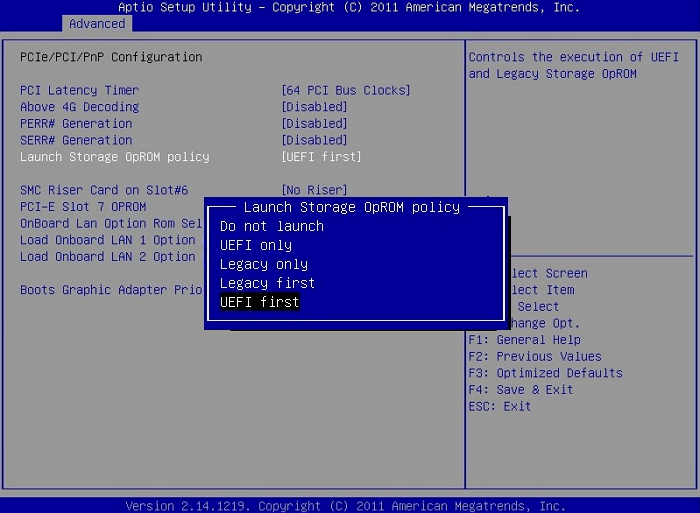
Enable Secure Boot:
Step 1. Restart PC and re-enter BIOS settings.
Step 2. Go to the Boot Menu, select the Secure Boot settings and set it to "Enabled".
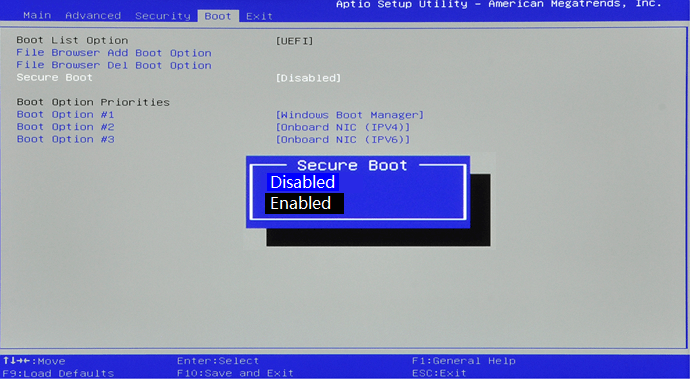
After completing the process, you can proceed with installing the Windows 11 update on your computer.
Guide 2. How to Fix "This PC can't run Windows 11. The system disk needs to be 64GB or larger." Error
Detailed Error Message: This PC can't run Windows 11 because it needs a system disk that's at least 64GB in size, but it will still receive Windows 10 updates.
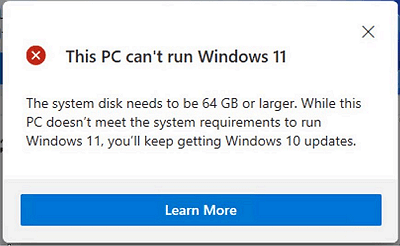
This error message indicates that your system disk space is too small, which mostly happens on old computers. Here are two tips for you:
1. If your computer is too old, purchased before 2015, it's recommended to stick with Windows 10.
2. If your computer has a new OS but the disk is too small, you can upgrade your system disk to fix this issue.
How to Fix Guide: (Upgrade OS disk to a larger one)
1. Purchase and Prepare a New Disk - SSD (Preferred)
- New disk capacity must be bigger than 64GB.
- SSD is more recommended for replacing OS disk.
- To initialize a disk in Disk Management, right-click the SSD, select "Initialize", and choose "GPT" as the partition style.
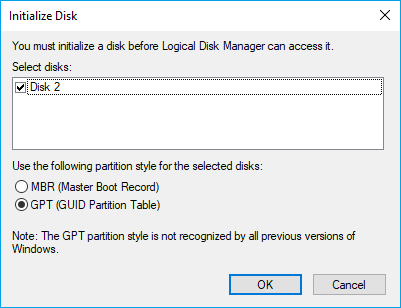
2. Transfer OS to New Disk
It's recommended to transfer the operating system to a new disk and keep data on the old drive, which optimizes computer performance.
Qiling Partition Master allows you to transfer your operating system and installed applications to a new disk using the Migrate OS to HDD/SSD feature, which can be done in just a few clicks.
Note:When migrating an operating system to an SSD or HDD, be aware that if there's not enough unallocated space on the target disk, the operation will delete and remove existing partitions and data on the target disk. This means that if you have important data on the target disk, it's essential to back up that data to an external hard drive before proceeding.
Step 1. Select "System clone" from the tools and utilities page.
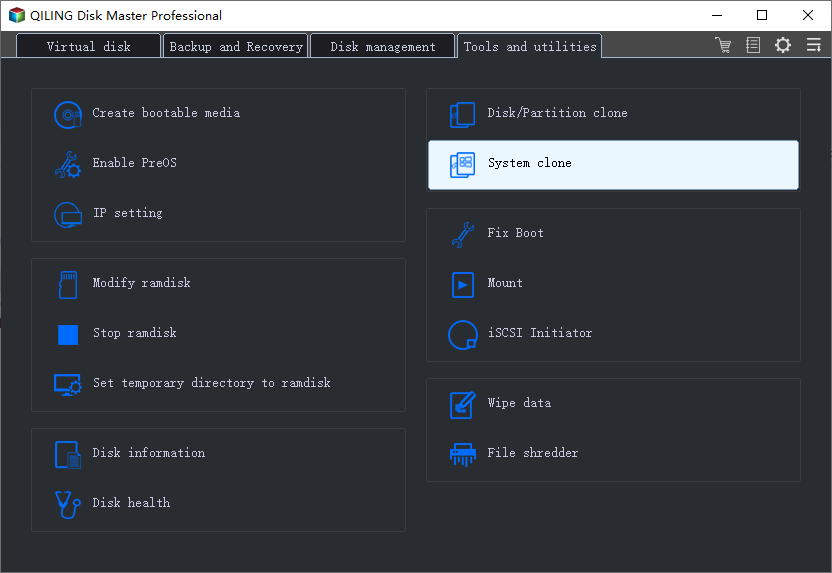
Step 2. The system partition will be selected automatically, and then click "Next".
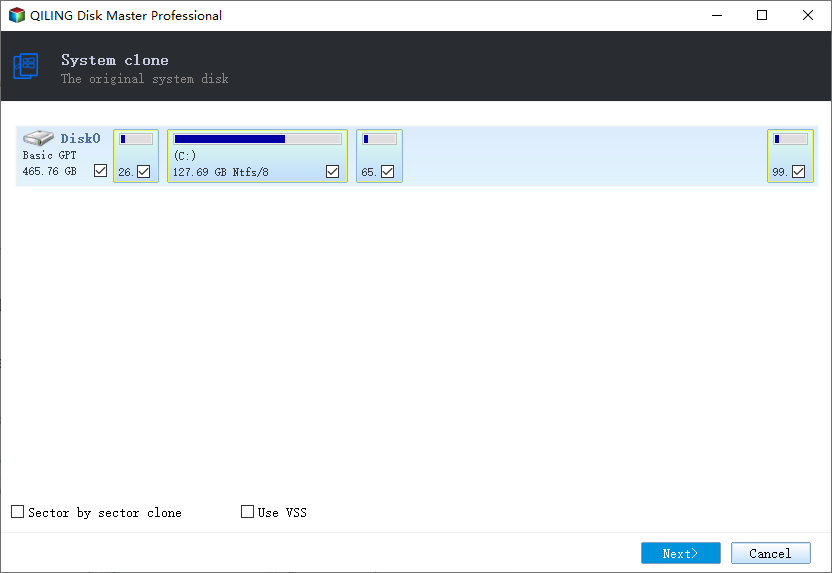
Step 3. Select the SSD or HDD as the destination disk and click "Next".
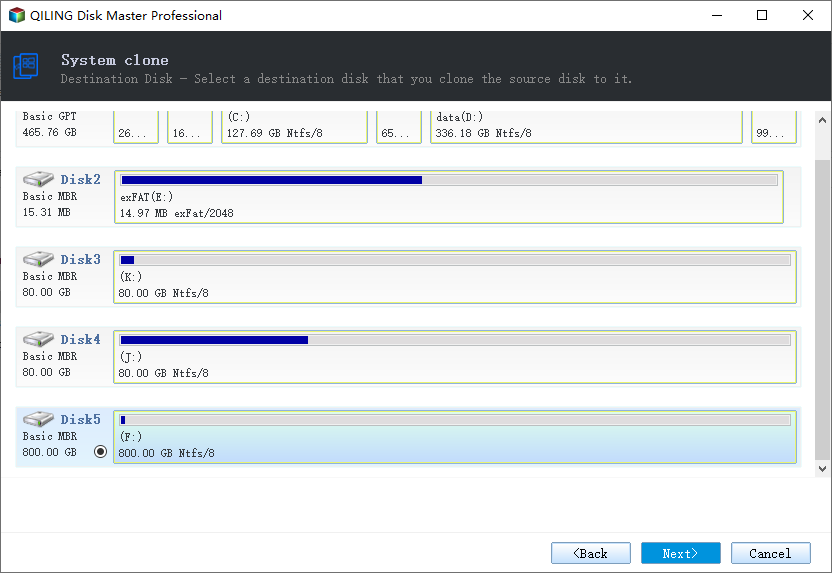
Step 4. Preview the layout of your target disk, and customize it if needed, before clicking "Proceed" to start migrating your OS to the new disk.
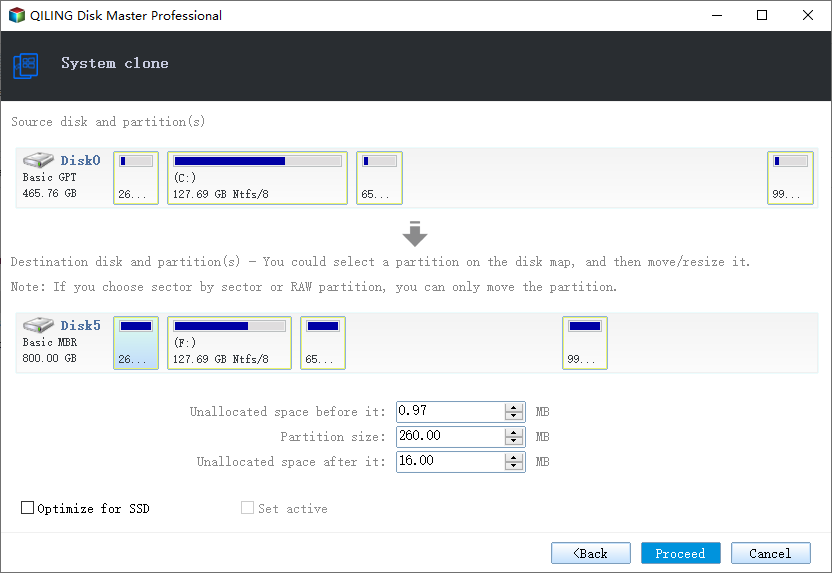
Step 5. Be aware that clicking "OK" will erase data and partitions on the target disk, including any important data that hasn't been backed up. Make sure to back up your data before proceeding. If you haven't backed up your data yet, do so immediately. Then, confirm the action by clicking "OK" to proceed.
After completing the task, restart the computer as instructed. If needed, access the BIOS settings to set the newly installed SSD as the boot drive.
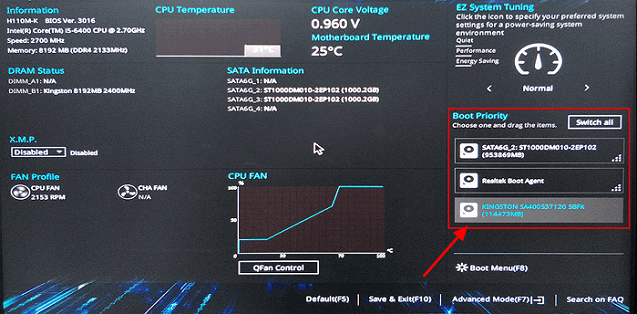
The computer will automatically restart and continue the Windows 11 update process after the initial restart. This may take a few minutes, and you will see a progress bar on the screen.
Guide 3: How to Fix "This PC can't run Windows 11. The processor isn't supported for Windows 11." Error
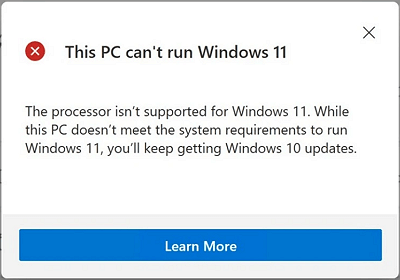 Detailed Error Message: This PC can't run Windows 11 because its processor isn't supported, but you'll still get Windows 10 updates.
Detailed Error Message: This PC can't run Windows 11 because its processor isn't supported, but you'll still get Windows 10 updates.
This error message means that the computer processor is not supported, indicating that it's not included in the list of processors that are officially supported by the system or software.
How to Fix:
1. Check your processor
- Press Ctrl+Alt+Del to bring up Task Manager, select to open it.
- Check the CPU generation in the performance section.
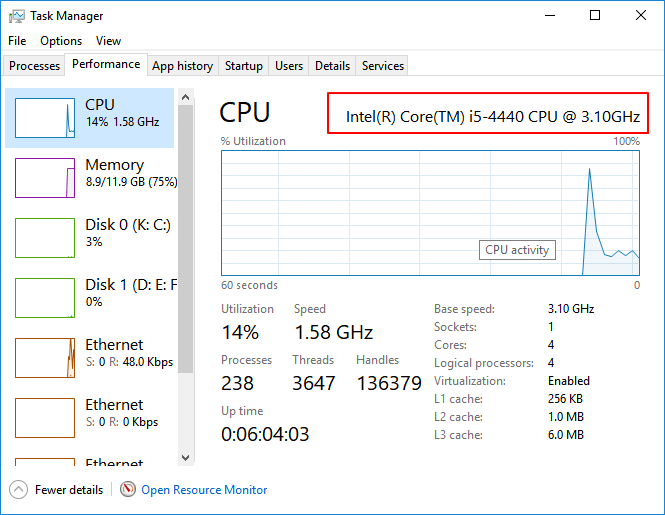
2. Check if your processor is supported for Windows 11
To determine if your Intel processor is supported by Windows 11, go to the Windows 11 Supported Intel Processors page and check if your processor is listed.
3. 3 options to fix unsupported processor
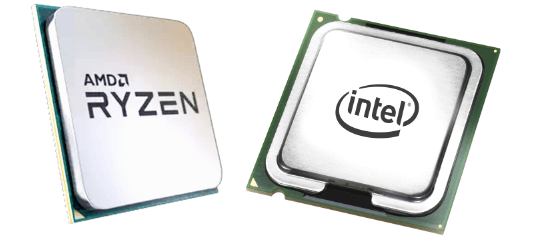
- Option 1. Stay with Windows 10
- Option 2. Replace processor in a local computer repair center.
- Option 3. Change processor on your own. (Risky) See how to upgrade CPU processor.
Editor's Suggestion: It's wise to stick with your current operating system to avoid potential security risks.
Guide 4: How to Fix "This PC can't run Windows 11. TPM 2.0 is a requirement for running Windows 11." Error
Detailed Error Message: This PC can't run Windows 11 because it requires TPM 2.0, which is not enabled. You should check if TPM 2.0 is enabled.
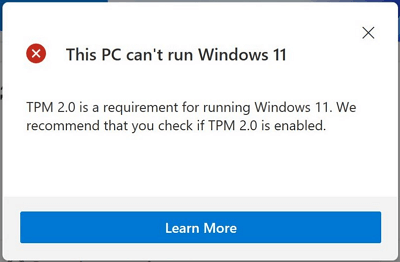
The error message has two possible meanings: it may indicate that the computer has a TPM chip but it's not enabled, or it may indicate that the computer doesn't have a TPM 2.0 chip, making it incompatible with Windows 11. To resolve this issue, refer to the provided fixes.
How to Fix:
1. Check if your computer supports Trusted Platform Module
Step 1. Press Windows + R keys, type tpm.msc in the Run dialog, and hit Enter.
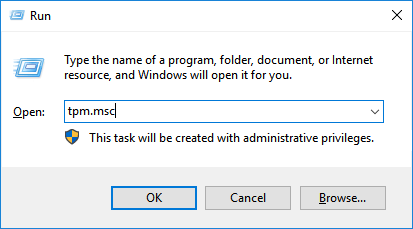
Step 2. When the Trusted Platform Module (TPM) utility appears, verify if the TPM is currently being utilized.
If yes, you'll see it under the Status section, marked as The TPM is ready for use.
Step 3.To check the TPM version, look for the TPM Manufacturer Information section. In this section, you'll be able to see the TPM version.
If your computer has TPM 2.0, you can install and run Windows 11 without any issues. Proceed to the next guide to enable TPM 2.0 and continue with the installation process.
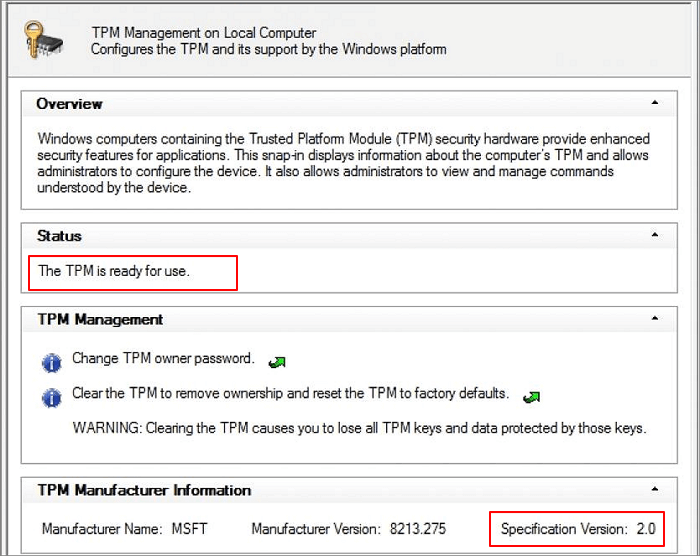
If the Trusted Platform Module (TPM) version is not 2.0 or lower, you won't be able to update to Windows 11.
Editors Suggestions: If your computer warns that a compatible TPM (Trusted Platform Module) cannot be found, or the TPM module version is lower than 2.0, it's recommended to stick with your current operating system rather than upgrading.
2. Enable TPM 2.0 chip for Windows 11
Step 1. Restart PC and press F2/F10/Del key to enter BIOS.
Step 2. Use the left key and go to the Security section.
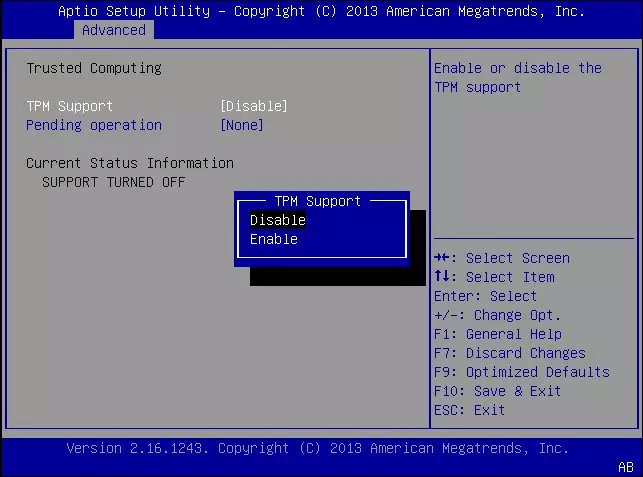
Step 3. Check the TPM State and if it's Disabled, change it to Enabled.
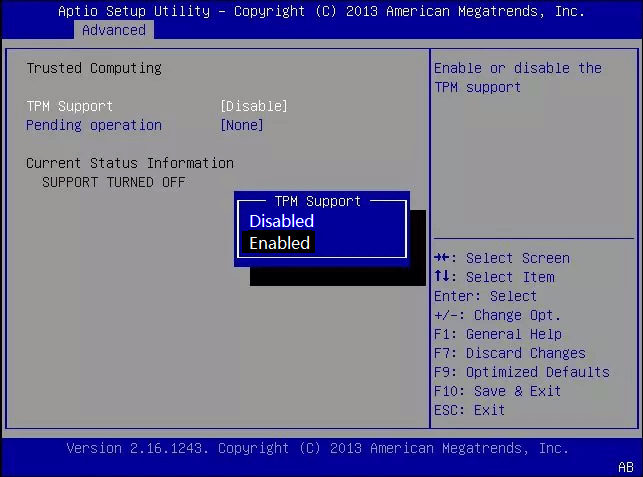
Step 4. Save the changes and exit BIOS.
After completing the steps, you can restart your computer and successfully get the Windows 11 update installed.
This PC can't run Windows 11 Is Not The End of The Day, Fix It and Get Windows 11 on Your PC Now
The "This PC can't run Windows 11" error typically occurs when using Microsoft's PC Health Check to verify if your computer is compatible with Windows 11.
If you encounter a compatibility issue with the new OS update, you'll likely receive an error message. However, you can take steps to resolve the issue and prepare for the update. We've compiled 4 common error messages along with their respective solutions to help you troubleshoot and get back on track.
If you are with one of the errors, go and follow to fix it, then make your computer ready for Windows 11 update now.
FAQs About This PC can't run Windows 11
Windows 11 users who installed the operating system via the Insider program reported similar issues with PC Health Check, such as errors related to This PC can't run Windows 11.
If you are encountering one of them, follow the quick guide to fix it:
1. How to fix "This pc can't run Windows 11. The PC must support TPM 2.0. The PC must support Secure Boot."?
You can try to fix the issue by reverting to Guide 1 and Guide 2 for help, or by doing the listed work.
- To confirm if your computer supports Secure Boot and TPM 2.0, you can check your computer's documentation or manufacturer's website. You can also check the BIOS settings by restarting your computer and entering the BIOS settings (usually by pressing F2, F12, or Del).
- If you're not experiencing any issues with your current operating system, there's no need to upgrade to Windows 11. You can simply stay with Windows 10 or your current OS and continue using it without any disruptions.
- If yes, go to the BIOS settings to enable UEFI mode, turn on Secure Boot, and enable TPM mode.
2. How to fix "This PC can't run Windows 11. There must be at least 4GB of system memory."?
This issue occurs when the system memory storage is too low. If your processor is compatible with Windows 11, you can resolve the problem by adding a new memory stick to your computer.
- If you're looking to replace your current memory stick, it's generally recommended to get a new one from the same brand. This ensures compatibility and consistency in performance. However, if your current memory stick is from a specific brand that's no longer available, you might consider alternatives from other well-known brands that offer similar features and quality.
- If your computer doesn't have an extra memory stick slot, replace the old memory stick with a bigger one.
3. What caused the "PC can't run Windows 11" issue?
The "This PC can't run Windows 11" error is not caused by the Windows 11 compatibility check tool.
Windows 11 is not compatible with PCs that do not meet its minimum system requirements, which include a 64-bit processor, at least 4 GB of RAM, and a Trusted Platform Module (TPM) 2.0.
When installing a new operating system like Windows 11, compatibility issues can arise if the hardware or software on your computer doesn't match the OS's requirements. To avoid this, it's essential to check the system requirements for Windows 11, which include a 64-bit processor, 4GB of RAM, a Trusted Platform Module (TPM) 2.0, and a UEFI Secure Boot-enabled PC.
- UEFI and Secure Boot must be enabled.
- TPM 2.0 chip must be enabled.
- OS disk storage must be 64GB or bigger.
- The processor must be an Intel Core processor produced from 2017 or an AMD Zen 2 processor produced from 2019.
- Memory at least needs to be 4GB or even bigger.
- A graphics card that meets the requirements must be DirectX12 or later with a WDDM 2.0 driver.
- Display must be at least 720P or higher.
Related Articles
- Windows 11 Is Not Activated: How to Activate Windows 11 OS for Free
- How to Use Device Encryption on Windows 11
- Windows 11 Is Affecting Performance on AMD CPUs, Fixes Are Coming Soon
- Windows 11 Free Upgrade from Windows 10 [How-to] Step by Step